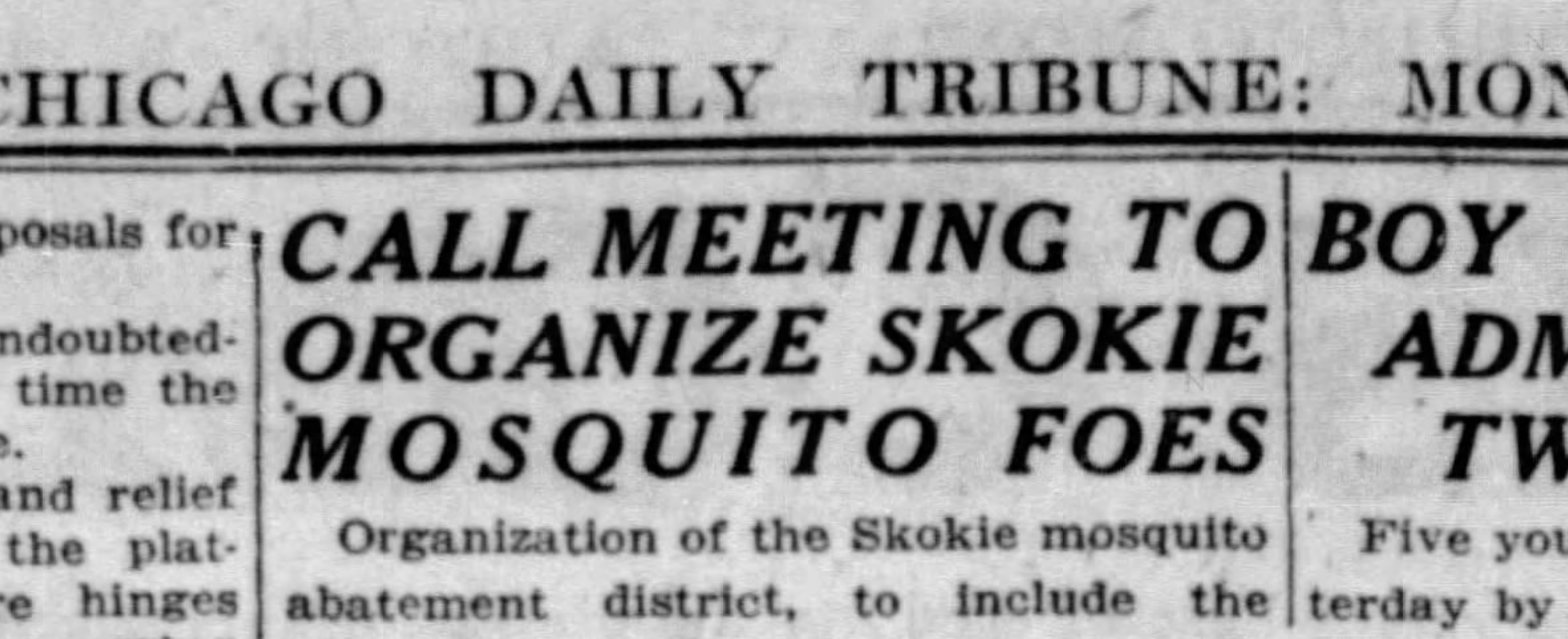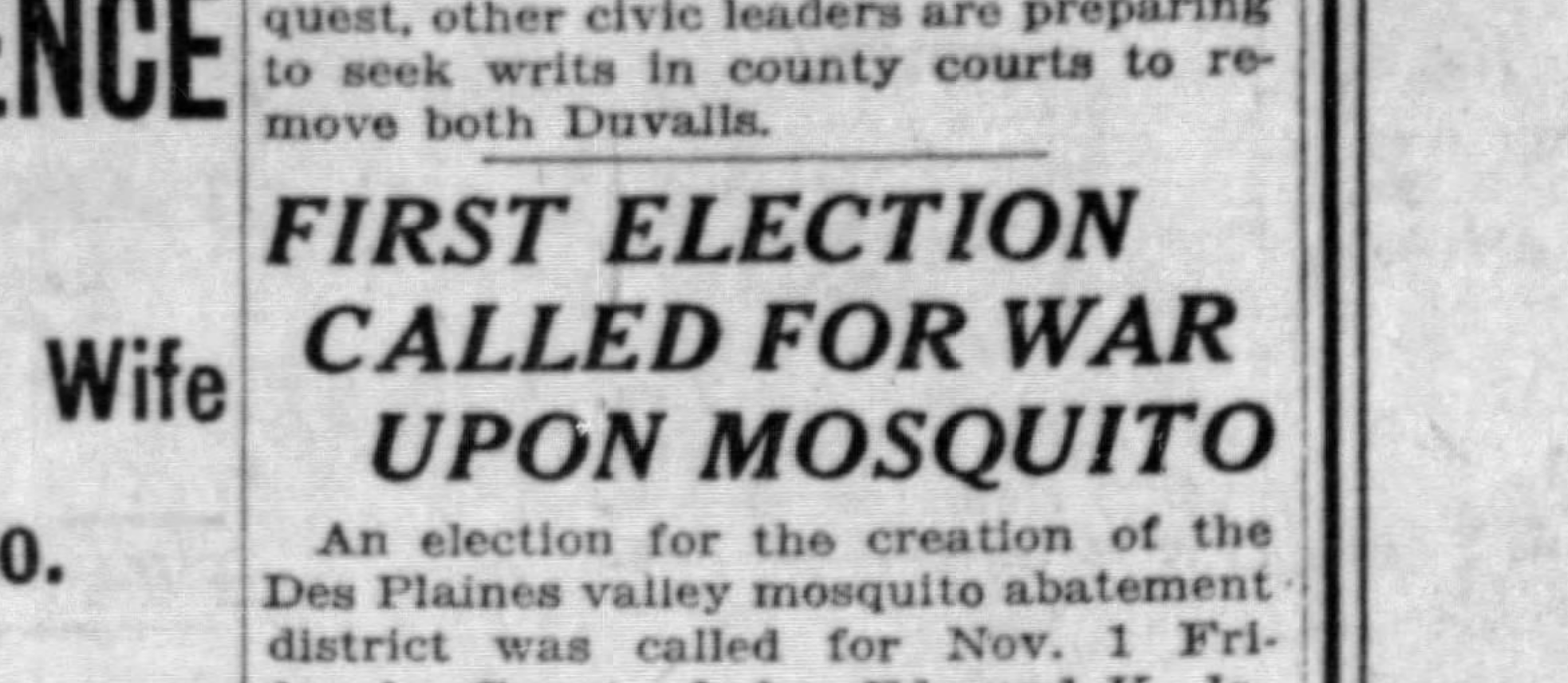Keeping track of West Nile virus and COVID-19 are uncannily similar practices. Dr. Rebecca Smith of the University of Illinois’ Modeling for Disease Control Improvement Lab breaks down the intricacies of modeling the spread of communicable diseases, the disparities challenging researchers, and its impact on residents.
When West Nile virus first landed in Chicago in the summer of 2002, some epidemiologists wanted to develop a vaccine to help curb its symptoms — which had the potential to be fatal — particularly to sensitive populations like the elderly, immunocompromised and pregnant. Skeptics abounded. .
“We’ve got 1,000 or so cases so far in humans this year. But that’s just a tiny, tiny drop in the bucket when you’re looking at the number of people,” Richard Pollack, immunology professor at Harvard School of Public Health, said in a Chicago Tribune piece in fall 2002, when West Nile was spreading across the region. “What are you going to do, vaccinate everybody?”
Mitigation efforts were swiftly underway, but a vaccine for human use was never widely developed, much to the chagrin of epidemiologists. Like a foreshadowing to the present, scientists sounded the alarm that the mosquito-borne virus might stick around for a while without more intervention and proactive treatment.
“The virus is still evolving and expanding in the United States. You can think about it as Dutch elm disease, a new pest into an area that’s still expanding and finding its ecological niche,” Dr. James Meegan, a program officer for the National Institute of Allergy and Infectious Diseases said in the same article back in 2002. “We might have to face West Nile each and every solitary summer from right now.”
Dutch elm disease, which kills trees, is “still a threat,” according to the Morton Arboretum, and so is West Nile. It’s been almost twenty years since West Nile arrived in the city, and agencies – in partnership with the Lincoln Park Zoo, which has been at the forefront of tracking the virus since its arrival, research institutes, and “quasi-governmental” organizations like Mosquito Abatement Districts – have no doubt tried a variety of mitigation strategies to help rein it in. So why is West Nile virus still here, and will it ever leave?

When mosquito abatement districts were approved by the Illinois State Legislature, only five percent of residents in an affected area were required to vote yes to organize a district for their region. Districts often spurn county and municipal borders, like the South Cook County district, which has its northern border at 87th Street. (Chicago Tribune, July 1927)
West Nile, like St. Louis encephalitis and other encephalitides, isn’t transmissible by humans; instead, the virus transmits through birds and mosquitoes, particularly dead birds that may be fed on by mosquitoes who spread the disease to mammals. This differs from other mosquito-borne illnesses like the Zika virus or Dengue fever, both of which can still be transmitted by humans to other humans through sex, pregnancy or blood transfusions.
In its first year in Illinois, West Nile virus infected 884 people, accounting for the largest share of cases in the country – 21 percent. Sixty-six people died, but the majority survived.
West Nile does lead to many fatalities every year, but the majority of those who contract it deal with symptoms similar to a mild flu, according to veterinary epidemiologist Dr. Rebecca Smith.
“With non-neuroinvasive cases, they’re kind of like a mild flu,” she said. According to Smith, a case is deemed neuroinvasive when it penetrates the nervous system and attacks the brain, which is when a case of West Nile progresses to a severe state and could lead to death. “Most people aren’t going to investigate – they’re going to say, ‘Oh man, I caught the flu in the summer, this sucks, I guess I’ll just have to stay home.’ And they’ll recover.”
The problem with keeping tabs on West Nile, Smith explained, is that most cases are so mild or have such a long latency period (the time between infection and noticeable symptoms) that people might not even suspect they’ve been infected unless it progresses to a severe state. This makes it hard to speedily and accurately track where clusters of cases could be occurring.
“We call them ‘tip of the iceberg’ diseases,” said Smith. “Because when you start to see cases in a population, it’s too late. Because there are so many cases that have built up, by the time you actually see clinical cases, there’s a massive infection going on.”
Regular testing — of mosquitoes and people — and medical treatment can help curb the impact of outbreaks, but only if people have access to it – and that’s a very big if in most communities, and the impact of that stretches far past just West Nile.
“With COVID, we can detect asymptomatic and pre-symptomatic cases — but we have to get those tests. In a lot of places, getting a test can be a lot harder.” Smith, who lives in Urbana, said that the University of Illinois Urbana-Champaign campus is saturated with tests because of the cutting-edge SHIELD Illinois testing program. But just 20 minutes outside of town, things are different.
“In a lot of places, it’s a lot harder … [Our] immigrant workers and neighbors at the local packing plant or in the agricultural system, don’t have access to transportation. And so there’s no testing center in town, they just don’t get tested,” she explained. “We have communities like that all over the country that don’t have access to tests, so they might think they have COVID, but they don’t have a way to find out for sure.”

In 1927, mosquito abatement districts, like the North Shore Abatement District, were formed to help combat the spread of human- and mosquito-transmittable viruses like Dengue fever. (Chicago Daily Tribune, August 1927)
It’s the lack of access to testing for communities historically marginalized by the healthcare system that lead to gaps in data — gaps that could make or break the ability to model the spread of a virus, for example. Unlike testing for positive cases in humans for COVID-19, the tracking of West Nile often comes from traps that are strategically placed across a region; the placement of traps, and the frequency they’re checked, is often reliant on individual municipalities or local health departments.
Smith said that because mosquito surveillance is “very much determined” by taxpayer funding and availability of personnel, higher-income areas of Chicagoland are much more likely to provide up-to-date data that can help scientists model potential spread. Some communities formed Mosquito Abatement Districts, or MADs, which are governmental bodies that coordinate their own mosquito control, like a local animal control agency. MADs have been around since they were authorized in 1927 by the Illinois General Assembly in the wake of years of recurring Dengue and yellow fever epidemics that gripped warm, humid regions, particularly in the summer.
But other communities, even within municipalities that have MADs, don’t have that kind of access. For areas of Chicago and Chicagoland not covered by MADs, mosquito tracking is up to the local health department, which might not have as many experts available.
“But in other areas, they might put out a trap when they have a little spare time in their health department, which lately? There’s not tons,” Smith said. The lack of regular placement of traps, as well as personnel who are trained in abatement, means inconsistent data and insight. “We’ll see the same thing with COVID. Places that have a lot of resources can do a really good job of providing testing and access to vaccinations; places that have fewer resources or fewer people to do the work are more limited in their ability to do anything.”
Inconsistent mosquito abatement comes at a cost: one that residents often have to shoulder with scant support.
During this past summer, a dry spring and wet summer created standing pools of water ideal for mosquito breeding, coupled with humid conditions that allowed them to thrive. This led to a spike in mosquito traps testing positive for West Nile virus at the end of the summer across the city, though a pocket of the North Side — including Irving Park, Albany Park, Lincoln Square and North Center — was the only area of the city sprayed with insecticide during the entire summer.
Far Northwest Side resident Melissa Di Giacomo, 26, remembers growing up with insecticide spray trucks, which she said she hasn’t seen in years.
“When [Richard] Daley Junior was mayor, I remember there were always spray trucks. [The city] would tell us when they’d spray our area and where, and [they’d] also put something in the sewers where they’d breed,” she said. Di Giacamo said that in the years since Rahm Emanuel became mayor, she’s noticed a steep drop in spray trucks, but not in mosquitoes. “It’s gotten progressively worse. [In] 2020 and 2021, it was pretty brutal and just awful for mosquitoes around here.”
As recommended by the Chicago Department of Public Health, Di Giacamo frequently lit citronella candles and used bug spray, but said that in the middle of the summer she had to invest in a DEET-based bug spray, which she’d avoided because of its strength.
When Di Giacamo, who lives in the O’Hare neighborhood, would see trucks, they’d be in neighboring Norridge, which runs its own abatement program, or to the north from the Northwest Mosquito Abatement District that has a regular nighttime spray system during peak mosquito season.
“I would see trucks [in O’Hare] when I was probably nine or 10 years old. We’d be at the park and yell ‘The spray truck is coming!’ and run for shelter,” she said, laughing. “I haven’t really seen them now. But I’m right on the border of Norridge, just a couple of blocks away. [When] they spray, sometimes I feel like we kind of get a whiff of it and it helps a bit.”
Outside of regular mitigation efforts — like spraying for West Nile virus and testing for COVID-19 — tracking the spread and getting it under control is the biggest priority for epidemiologists. Consistent data is crucial to that goal.
“West Nile virus is never going away. It did spread a lot faster and farther than we thought it would, but it’s now endemic in the U.S. … and our question now is how we can control it best,” Smith said. Because West Nile is endemic, it’s specific to certain regions and seasons — like humid areas in the summertime. With COVID-19’s potential for being just as pervasive as West Nile virus, Smith said “we’re headed there,” as more variants crop up and herd immunity hasn’t yet been reached for most of the country.
“It’s very difficult to watch as an infectious disease person, because we’re at this point where the number of active [COVID-19] cases means we have to work extra hard to get it under control,” she said. “Part of this is just human behavior — people have chosen to ignore the things that work, or refused to do the things that work, so we’re stuck in this cycle right now.”
“As epidemiologists, we’re starting to get a little beaten down over this whole thing: we’ve known from the beginning what works. It still works, it just has to be done better.”
In the header, Chicagoland politicians have been fighting mosquito-borne illness for a long time, creating new legislation-borne agencies called “mosquito abatement districts” in its wake. (Header image from the Chicago Daily Tribune, 1927)




NO COMMENT